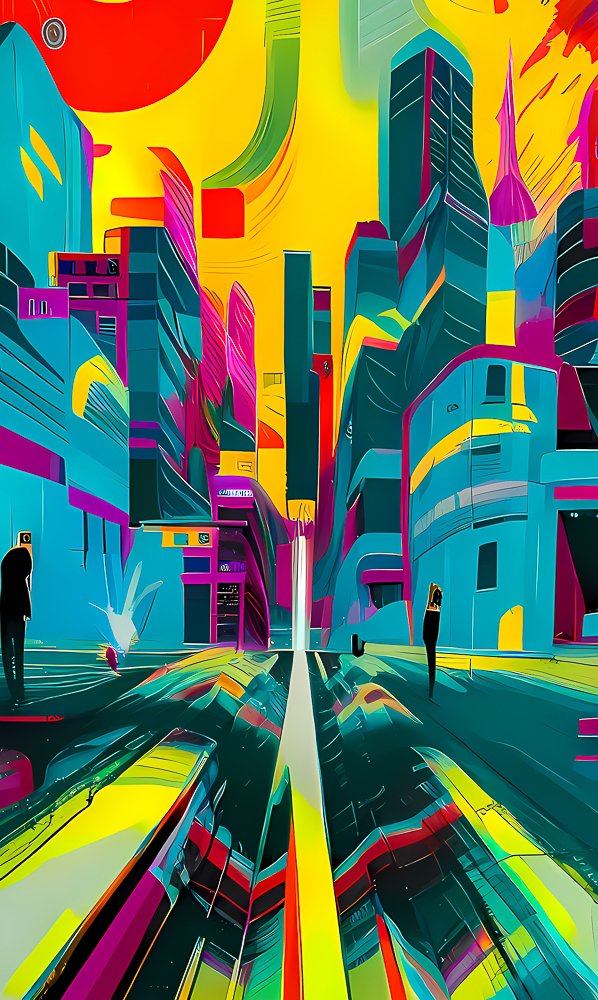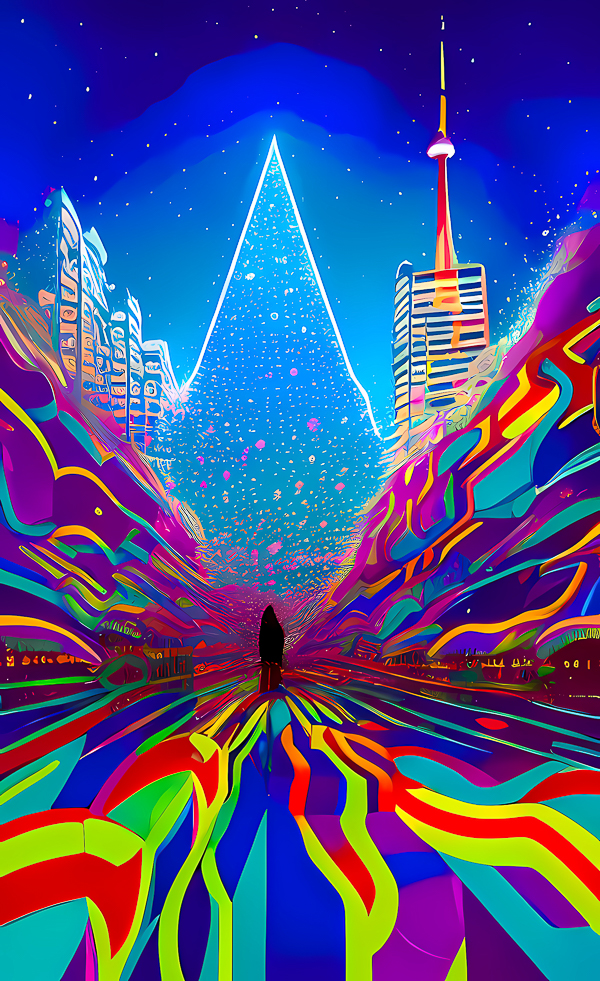Abstract Art: Futurism
What is Futurism?
Futurism was an avant-garde art movement that originated in Italy in the early 20th century, with its manifesto published by Filippo Tommaso Marinetti in 1909. Futurism encompassed various artistic forms, including painting, sculpture, literature, music, architecture, and even performance. The movement was characterized by its celebration of modernity, technology, speed, and a rejection of traditional artistic conventions.
Key features of Futurism include:
1. Celebration of Technology and Modernity: Futurists were fascinated by the rapid technological advancements of the early 20th century, such as the advent of the automobile, the airplane, and industrial machinery. They embraced the dynamism of modern life and sought to capture the energy and speed of the machine age in their artworks.
2. Dynamic and Energetic Forms: Futurist art often depicted dynamic, energetic forms that conveyed a sense of movement and speed. Artists used bold lines, geometric shapes, and fractured forms to create a visual language that reflected the speed and motion of the modern world.
3. Manifestos and Manifestations: Filippo Tommaso Marinetti, the founder of Futurism, wrote a series of manifestos that outlined the movement’s principles. These manifestos expressed a disdain for tradition and a desire to break free from the artistic and cultural norms of the past. Futurist artists were known for their provocative and often controversial declarations.
4. Interest in Time and Motion: Futurist artists were intrigued by the concept of time and motion. They sought to capture not just a static representation of a subject but its movement through time and space. This interest in dynamism aligned with the broader cultural fascination with speed and progress.
5. Experimentation with New Materials: Futurist artists experimented with new materials and techniques. They explored unconventional materials, such as glass, metal, and even the inclusion of industrial materials in their sculptures. This experimentation was in line with their desire to embrace modern industrial processes.
Futurism had a significant impact on the development of modern art and influenced movements such as Cubism and Constructivism. While initially associated with Italy, Futurist ideas and aesthetics spread to other countries, contributing to the broader cultural and artistic shifts of the early 20th century.
What is the meaning of Futurism art?
Futurism, as an art movement, aimed to capture and express the dynamism, energy, and excitement of the rapidly changing modern world during the early 20th century. The movement emerged in the context of industrialization, technological advancements, and a cultural shift towards a more mechanized and urbanized society. Here are some key aspects of the meaning behind Futurist art:
1. Celebration of Modernity and Technology: Futurist artists celebrated the technological marvels of their time, such as automobiles, airplanes, and industrial machinery. They viewed these advancements as symbols of progress and embraced the speed and dynamism they brought to everyday life.
2. Dynamism and Motion: One of the central themes in Futurist art is the depiction of motion and dynamism. Artists sought to convey the sensation of speed and movement, often breaking down objects into fragmented, dynamic forms. This approach aimed to capture the essence of a subject in motion rather than presenting a static representation.
3. Rejection of Tradition: Futurism was a movement that rejected traditional artistic forms and cultural norms. The Futurists were eager to break away from the constraints of the past and declared a complete rejection of historical styles and academic traditions. They believed that art should be a reflection of the contemporary world and the rapid changes happening around them.
4. Manifestos and Provocation: The movement was characterized by a series of manifestos written by Filippo Tommaso Marinetti and other Futurist artists. These manifestos outlined the principles of Futurism, expressing a desire for change, innovation, and a break from the artistic and social conventions of the past. The manifestos were often provocative and aimed at stirring controversy.
5. Connection to Politics and Nationalism: In some cases, Futurism was closely tied to political ideologies and nationalism. While not all Futurists were explicitly political, some aligned themselves with nationalist movements and ideologies, particularly in Italy. This connection to politics reflected a desire for radical societal change.
In summary, Futurism sought to create art that reflected the excitement and energy of the modern age. It was a movement of innovation, rejecting tradition in favor of capturing the spirit of a rapidly evolving world. The visual language of Futurism, with its emphasis on motion, speed, and modern technology, had a profound impact on the course of modern art and influenced subsequent movements.



